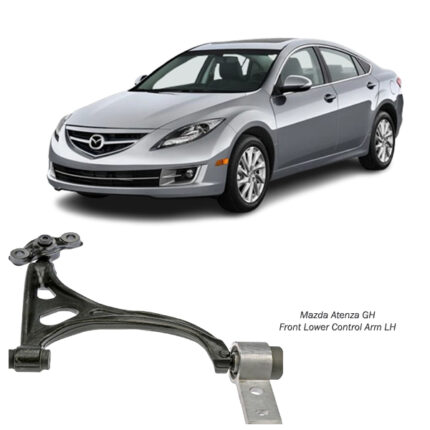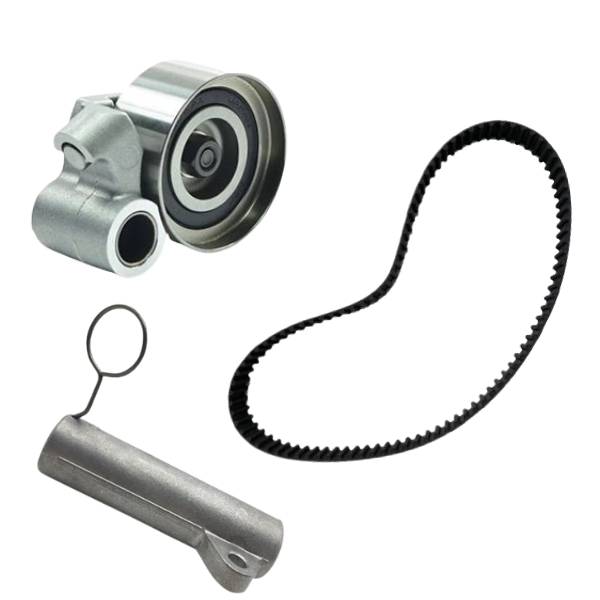Get Timing Belt Kit 1KD / 2KD Toyota Genuine in Kenya
The Timing Belt Kit is a complete engine synchronization solution designed to replace all essential components that ensure precise timing between the crankshaft and camshaft(s). It is a critical maintenance set that helps maintain the correct opening and closing of engine valves in coordination with piston movement, allowing the engine to run efficiently, smoothly, and without internal interference.
Replacing the timing belt and related components as a set prevents premature wear, reduces the risk of catastrophic engine damage, and ensures optimal performance over thousands of operating hours.
Purpose and Function
The timing belt is a reinforced, toothed belt that mechanically synchronizes the crankshaft (which controls piston movement) with the camshaft(s) (which control valve operation). This synchronization ensures:
-
Accurate valve timing for efficient air-fuel mixture intake and exhaust gas expulsion.
-
Prevention of piston-valve collisions in interference engine designs.
-
Consistent engine performance across all RPM ranges.
The kit includes additional components—such as tensioners and idler pulleys—that keep the belt properly tensioned and aligned. These supporting parts are just as critical as the belt itself; if they fail, the result can be as damaging as a broken belt.
Typical Components in a Timing Belt Kit
A complete timing belt kit generally contains:
-
Timing Belt – Constructed from high-strength synthetic rubber compounds (often with fiberglass or Kevlar reinforcement) and precision-molded teeth that mesh with sprockets. The belt resists stretching, oil contamination, and temperature extremes.
-
Tensioner Pulley – Maintains correct belt tension throughout the engine’s operating range. This may be spring-loaded, hydraulic, or manual, depending on the design.
-
Idler Pulleys – Guide and route the belt for proper alignment. These reduce friction and prevent the belt from slipping off track.
-
Water Pump (in many kits) – In engines where the water pump is driven by the timing belt, the kit includes a new pump to avoid future failures that would require another belt removal.
-
Seals and Gaskets – Front crankshaft and camshaft seals may be included to prevent oil leaks from contaminating the new belt.
-
Fasteners – New bolts or washers for secure installation of tensioners and pulleys.
Construction and Materials
The timing belt in the kit is engineered for durability:
-
Outer Layer – Heat-resistant synthetic rubber to withstand engine bay temperatures.
-
Tensile Cords – Fiberglass, Kevlar, or polyester cords provide high tensile strength and prevent stretching.
-
Tooth Profile – Precisely shaped teeth ensure a secure fit with sprockets, minimizing slippage and noise.
The pulleys and tensioners are typically made from high-grade steel or aluminum with precision bearings for low friction and long service life. Bearing seals are designed to retain lubrication and keep out contaminants.
Working Principle
As the crankshaft rotates, it drives the timing belt, which in turn rotates the camshaft(s). This ensures that valves open and close at the exact moment relative to piston movement. The tensioner keeps the belt taut, compensating for temperature changes and wear over time. Idler pulleys route the belt along the correct path and prevent vibration or deflection.
In engines where the water pump is belt-driven, it rotates in sync with the crankshaft, ensuring proper coolant circulation through the engine.
Importance of Replacing as a Kit
Replacing only the belt and leaving old pulleys or tensioners in place risks premature failure. Worn bearings, weak springs, or misaligned pulleys can cause the belt to slip, fray, or break. Because the labor involved in accessing the belt is significant, replacing all related components at once is both cost-effective and preventive.
Consequences of Timing Belt Failure
If the belt breaks or slips in an interference engine, pistons can strike open valves, causing:
-
Bent valves
-
Damaged pistons
-
Broken rocker arms or camshafts
-
Severe engine damage requiring major repairs
Even in a non-interference engine, failure leads to immediate engine shutdown, potentially leaving the vehicle stranded.
Signs of Wear or Imminent Failure
-
Cracks, fraying, or missing teeth on the belt
-
Oil contamination on the belt’s surface
-
Squeaking or grinding noises from the timing area
-
Visible wear or looseness in pulleys
-
Coolant leaks from a worn water pump (in belt-driven systems)
Maintenance and Replacement Intervals
Replacement intervals vary depending on engine design, belt material, and manufacturer guidelines, but typical recommendations are:
-
Every 60,000 to 100,000 km (37,000–62,000 miles) for standard belts
-
Every 100,000 to 160,000 km (62,000–100,000 miles) for long-life belts with advanced materials
Replacement should also be done if:
-
The vehicle is over the age limit for the belt (often 5–7 years, even if mileage is low).
-
The belt is contaminated by oil or coolant.
-
There is visible pulley or tensioner damage.
Installation Considerations
Proper installation of a timing belt kit is a precision task:
-
Engine timing marks must be aligned exactly before removal.
-
Belt tension must be set to manufacturer specifications.
-
All mounting bolts for tensioners and pulleys must be torqued correctly.
-
If included, the water pump should be replaced to prevent future disassembly.
-
Oil seals should be replaced to prevent contamination of the new belt.
Incorrect installation can result in poor engine performance, noise, or immediate damage.
Performance Specifications
A high-quality timing belt kit should meet these performance standards:
-
Tensile Strength – Withstand high torque loads without stretching.
-
Temperature Resistance – Operate reliably in -40°C to 120°C conditions.
-
Chemical Resistance – Resist oil, coolant, and fuel vapors.
-
Low Noise Operation – Maintain quiet running even at high RPM.
-
Precision Fit – Match sprocket profiles exactly to prevent slippage.
Benefits of Using a Complete Kit
-
Comprehensive Protection – All related components replaced together to prevent future failures.
-
Long-Term Reliability – Reduced risk of breakdowns due to aged pulleys or tensioners.
-
Improved Engine Efficiency – Correct valve timing maximizes power output and fuel economy.
-
Peace of Mind – Reduces the need for repeated labor on the same area.
Environmental Considerations
While timing belts and their components are not directly recyclable due to mixed materials, proper disposal prevents environmental contamination from oils and lubricants. Some metal pulley parts can be separated and recycled.
Follow Us On Facebook For More Parts.




